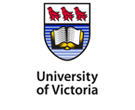Marketing cooperatives and supply management
| Title | Marketing cooperatives and supply management |
| Publication Type | Thesis |
| Year of Publication | 1994 |
| Authors | Janmaat JA |
| Academic Department | Agricultural Economics |
| Degree | Master of Science M.Sc. |
| University | University of British Columbia (Canada) |
| City | Vancouver, BC |
| Keywords | Dairy products -- Cooperative marketing -- British Columbia, Dairy products industry -- British Columbia |
| Abstract | Cooperatives are commonplace in the dairy sector throughout the developed world. A cooperative is an organization whose patrons are those who contribute the capital. Two features that distinguish a cooperative are: profits are distributed by member patronage, and member control is democratic. In theory, this organizational form cannot sustainably capture economic rents. Members adjust their production until any captured rents are eliminated, restoring the competitive solution. In British Columbia, the dairy industry is regulated by supply management. Production quotas control output, while fanner returns are guaranteed by restricting imports and administering the price. All milk is pooled, and processors need not deal directly with dairy producers. A simple model of the BC dairy industry, with farm production or processor input as the only variable, shows that the ‘competitive yardstick’ is not maintained. The industry wide milk pool decouples the cooperative from its membership. When this cooperative maximizes its patronage dividend, supply management totally separates it from its members incentives. Given that the administrative price is not set to eliminate all processing rents, the positive patronage dividend is an incentive for all farmers to join the cooperative. Simultaneously, a competing IOF can capture rents because it is buying milk at the pooi price and does not compete with the cooperative for its input needs. The financial statements of the Fraser Valley Milk Producers Cooperative Association lend support to the model. Based on performance ratios, this cooperative is behaving similar to other firms in the dairy industry, and may be capturing rents on behalf of its members. The one area of discrepancy is in the source of financing, and this can be largely explained by changing member investment preferences. Our model predicts that in B.C. the price of quota should be dependent on the return generated by our theoretical cooperative. We find that the present perfonnance of the cooperative is not a useful predictor of the quota price. However, quota price appears to be closely linked to indicators of future economic performance, and the sign of this linkage is consistent with our model. |
| URL | http://hdl.handle.net/2429/5353 |


 The Social Economy Student Network
The Social Economy Student Network


